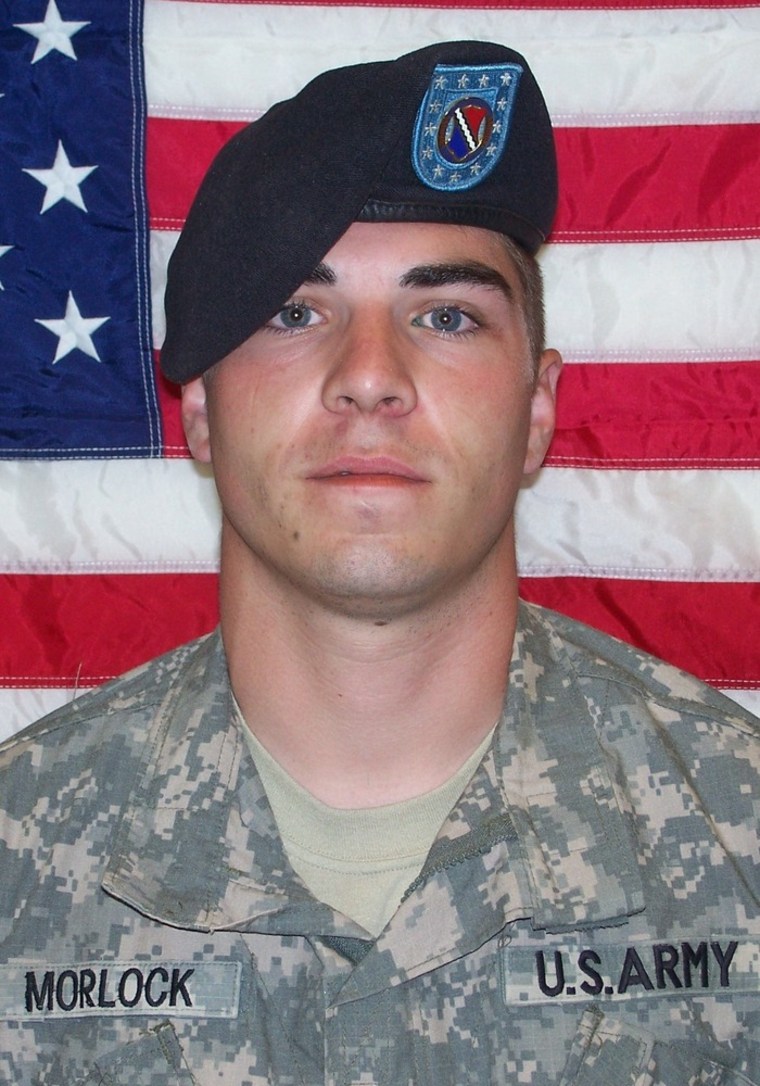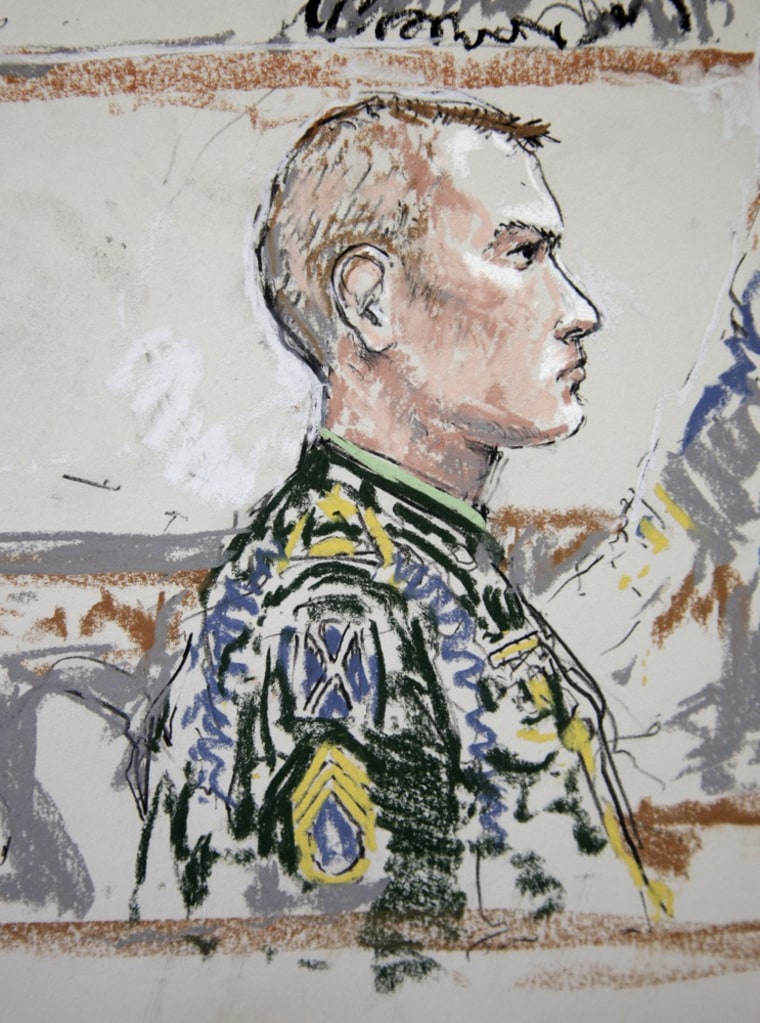The lawyer for a U.S. Army sergeant charged with murdering three unarmed Afghan civilians as leader of a rogue platoon acknowledged Monday that his client had removed fingers from Afghans killed in combat.
Army Specialist Jeremy Morlock, sentenced in March to 24 years in prison for his role in the same killings, was the first prosecution witness called to the stand as testimony got underway in the court-martial of Staff Sergeant Calvin Gibbs.
Prosecutors have cast Gibbs as the main instigator, and Morlock as his right-hand man, in the most egregious case of atrocities U.S. military personnel are accused of committing in the 10 years of war in Afghanistan. The killings were initially exposed through a probe of rampant drug abuse among soldiers.
In opening statements, Gibbs' defense lawyer Phillip Stackhouse suggested jurors would hear many interpretations of the events in question during the trial from various witnesses. But he did not directly address the question of his client's culpability for the three killings with which Gibbs is charged.
Stackhouse acknowledged that his client had removed fingers from Afghans killed in combat. But he said this was done once by accident in the process of quickly gathering biometric data from the corpse, as required by Army regulations. In other cases, he said, Gibbs was motivated by rage.
"Gibbs is mad; this individual had tried to kill him. These people had tried to kill him," Stackhouse said. "As the body is put in a body bag, he takes out a pair surgical shears and cuts off his index finger. Which one? The trigger finger."
Published photographs showing Morlock and another soldier posing separately with the bloodied corpse of an Afghan boy they had just killed have drawn comparisons to the inflammatory Abu Ghraib prisoner abuse scandal in Iraq in 2004.
Gibbs, 26, of Billings, Montana, was the highest-ranking of five enlisted men from the infantry unit formerly known as the 5th Stryker Brigade charged with murdering Afghan villagers while deployed last year in Kandahar province.
He also was charged with cutting fingers off Afghan bodies and beating a fellow soldier who had alerted superiors to hashish use in their unit. Seven other Stryker soldiers were charged with lesser offenses. Most have already reached plea deals and have been sentenced.
If convicted on all charges, Gibbs faces a maximum sentence of life in prison without the possibility of parole. He pleaded not guilty on the first day of his court-martial on Friday.
Gibbs also spoke often about how "easy" it was to disguise such slayings as combat casualties, his chief accuser testified on Monday.
'We can get away with it'
Morlock, echoing his previous sworn statements in the case, testified on Monday that he and Gibbs had held dozens of discussions about how they could stage random killings of Afghan civilians to look like legitimate combat engagements.

Their schemes included the planting of captured enemy weapons, such as an assault rifle or hand grenade, near the body of a victim, Morlock said.
"We can get away with it. It's that easy," he quoted Gibbs as telling him.
Encountering one Afghan villager on patrol in February 2010, Morlock recounted that Gibbs "asked if we were willing to kill this guy or smoke him, and I said, 'Sure.'"
Gibbs turned and fired an AK-47 into a wall behind them to give the appearance they had been shot at, "then fired two to three rounds into the individual," Morlock testified. Morlock said he also shot the man, and that the AK-47 was left on the ground nearby.
A photograph displayed as evidence in court showed Gibbs, Morlock and a third soldier posed grinning over the man's body, lying in a pool of blood.
Asked by the prosecutor to explain the purpose of the photo, Morlock replied, "It was a victory photograph, a trophy photograph, if you will, sir."
Gibbs sat silently through Morlock's testimony, staring straight ahead at the desk in front of him. The two men, both in full dress uniform, avoided eye contact with each other.
Slideshow 23 photos
Living in the combat zone
Morlock agreed to testify against Gibbs and other co-defendants as part of a deal he reached with military prosecutors in March in which he pleaded guilty to three counts of premeditated murder and was sentenced to prison.
It was Morlock who appeared in photographs published in March by two magazines — Der Spiegel and Rolling Stone — showing him crouched smiling over the body of a 15-year-old Afghan boy, holding the boy's head up by the hair.
A similar photo was published of another member of the self-styled "kill team," Andrew Holmes, who pleaded guilty last month to a single count of murder and was sentenced to seven years in prison.
The court-martial is expected to run at least to the end of the week at Joint Base Lewis-McChord near Tacoma.

